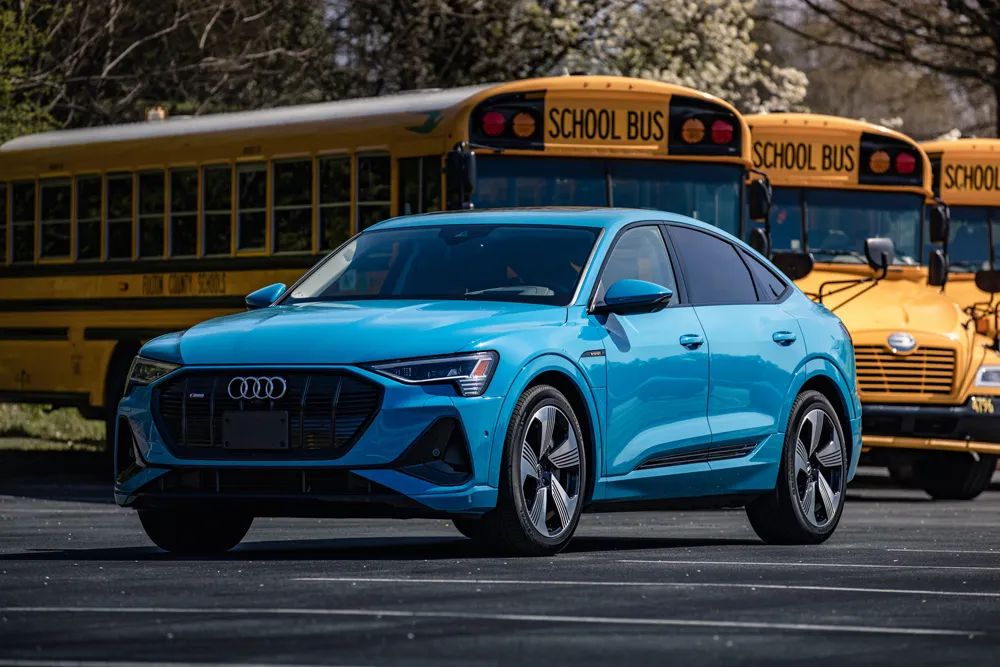The US Advocates for Highway and Auto Safety, the Truck Safety Coalition, the Center for Auto Safety and Road Safe America have filed a petition with the National Highway Traffic Safety Administration (NHTSA) requesting that the agency initiate rulemaking to require forward collision avoidance and mitigation braking (F-CAM) systems on all new large trucks and buses with a gross vehicle weight rating (GVWR) of 10,000 pounds or more. F-CAM technology uses radar and sensors to first alert the driver and then t
February 20, 2015
Read time: 3 mins
RSSThe US 4940 Advocates for Highway and Auto Safety, the Truck Safety Coalition, the Center for Auto Safety and Road Safe America have filed a petition with the 834 National Highway Traffic Safety Administration (NHTSA) requesting that the agency initiate rulemaking to require forward collision avoidance and mitigation braking (F-CAM) systems on all new large trucks and buses with a gross vehicle weight rating (GVWR) of 10,000 pounds or more.
F-CAM technology uses radar and sensors to first alert the driver and then to apply the brakes when a crash is imminent. f-cam systems employ a forward collision warning (FCW) to alert a driver when his/her vehicle gets too close to another vehicle that is stopped or travelling more slowly in front of his/her vehicle, giving the driver a chance to brake. When the system determines that a crash is about to occur, a collision mitigation braking (CMB) system automatically applies the brakes to avoid the crash or reduce its severity.
NHTSA estimates that current generation F-CAM systems can prevent over 2,500 crashes each year and future generation systems could prevent over 6,300 crashes annually. However, the agency has not yet decided to move ahead to require this basic crash avoidance technology.
“The safety technology is available to reduce the carnage on America’s roads resulting from rear-end crashes by large trucks,” said Henry Jasny, senior vice president of Advocates for Highway and Auto Safety. “The NHTSA can take action to improve safety and reduce preventable losses by requiring F-CAM technology on all large commercial motor vehicles.”
Truck crashes are a serious public safety threat. Every year on average, over 4,000 people are killed and nearly 100,000 are injured in crashes involving large trucks. Since 2009, the number of fatalities resulting from collisions involving large trucks has risen 16 percent and injuries have increased by 40 per cent. The annual cost to society from crashes involving commercial motor vehicles is estimated to be over US$99 billion.
According to NHTSA data, from 2003-2008, there were 32,000 crashes involving a truck striking the rear of a vehicle resulting in at least 300 fatalities and injuring over 15,000 people annually. However, since 1,600 large trucks are involved in fatal crashes in which the front end of the truck is the initial point of impact, the annual death toll in this crash mode may be far higher than 300 deaths each year. These crashes are precisely the type of collisions that F-CAM technology can prevent.
John Lannen, executive director of the Truck Safety Coalition commented, “In work zone areas and when traffic is significantly slowed or at a complete stop, cars are particularly vulnerable to being rear ended by large trucks. Trucks are overrepresented in fatal highway crashes, and they are even more so in fatal work zone crashes. This is why it is imperative that F-CAM technology is required safety equipment in large trucks.”
Federal regulatory action has previously expedited the installation of critical vehicle safety advances, such as airbags and electronic stability control (ESC) systems, by requiring these safety systems as standard equipment rather than as expensive options. Federal regulation remains the best and swiftest means to ensure the latest safety advances reach the majority of the travelling public.
“Many hundreds of lives could be saved each year if trucks are equipped with automatic braking systems,” said Clarence Ditlow, executive director of the Center for Auto Safety. “The NHTSA should move quickly to require this safety technology on all trucks.”
F-CAM technology uses radar and sensors to first alert the driver and then to apply the brakes when a crash is imminent. f-cam systems employ a forward collision warning (FCW) to alert a driver when his/her vehicle gets too close to another vehicle that is stopped or travelling more slowly in front of his/her vehicle, giving the driver a chance to brake. When the system determines that a crash is about to occur, a collision mitigation braking (CMB) system automatically applies the brakes to avoid the crash or reduce its severity.
NHTSA estimates that current generation F-CAM systems can prevent over 2,500 crashes each year and future generation systems could prevent over 6,300 crashes annually. However, the agency has not yet decided to move ahead to require this basic crash avoidance technology.
“The safety technology is available to reduce the carnage on America’s roads resulting from rear-end crashes by large trucks,” said Henry Jasny, senior vice president of Advocates for Highway and Auto Safety. “The NHTSA can take action to improve safety and reduce preventable losses by requiring F-CAM technology on all large commercial motor vehicles.”
Truck crashes are a serious public safety threat. Every year on average, over 4,000 people are killed and nearly 100,000 are injured in crashes involving large trucks. Since 2009, the number of fatalities resulting from collisions involving large trucks has risen 16 percent and injuries have increased by 40 per cent. The annual cost to society from crashes involving commercial motor vehicles is estimated to be over US$99 billion.
According to NHTSA data, from 2003-2008, there were 32,000 crashes involving a truck striking the rear of a vehicle resulting in at least 300 fatalities and injuring over 15,000 people annually. However, since 1,600 large trucks are involved in fatal crashes in which the front end of the truck is the initial point of impact, the annual death toll in this crash mode may be far higher than 300 deaths each year. These crashes are precisely the type of collisions that F-CAM technology can prevent.
John Lannen, executive director of the Truck Safety Coalition commented, “In work zone areas and when traffic is significantly slowed or at a complete stop, cars are particularly vulnerable to being rear ended by large trucks. Trucks are overrepresented in fatal highway crashes, and they are even more so in fatal work zone crashes. This is why it is imperative that F-CAM technology is required safety equipment in large trucks.”
Federal regulatory action has previously expedited the installation of critical vehicle safety advances, such as airbags and electronic stability control (ESC) systems, by requiring these safety systems as standard equipment rather than as expensive options. Federal regulation remains the best and swiftest means to ensure the latest safety advances reach the majority of the travelling public.
“Many hundreds of lives could be saved each year if trucks are equipped with automatic braking systems,” said Clarence Ditlow, executive director of the Center for Auto Safety. “The NHTSA should move quickly to require this safety technology on all trucks.”








